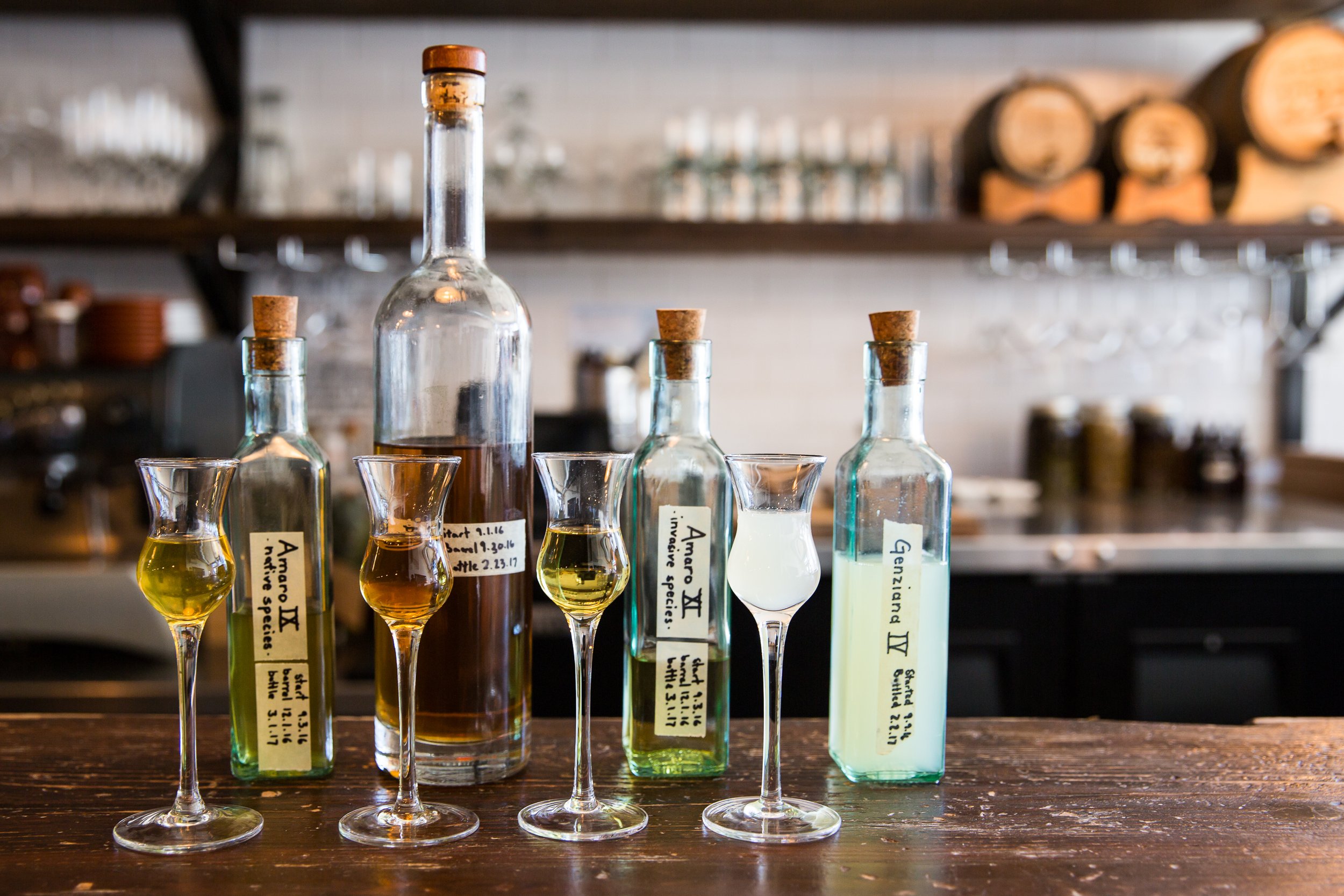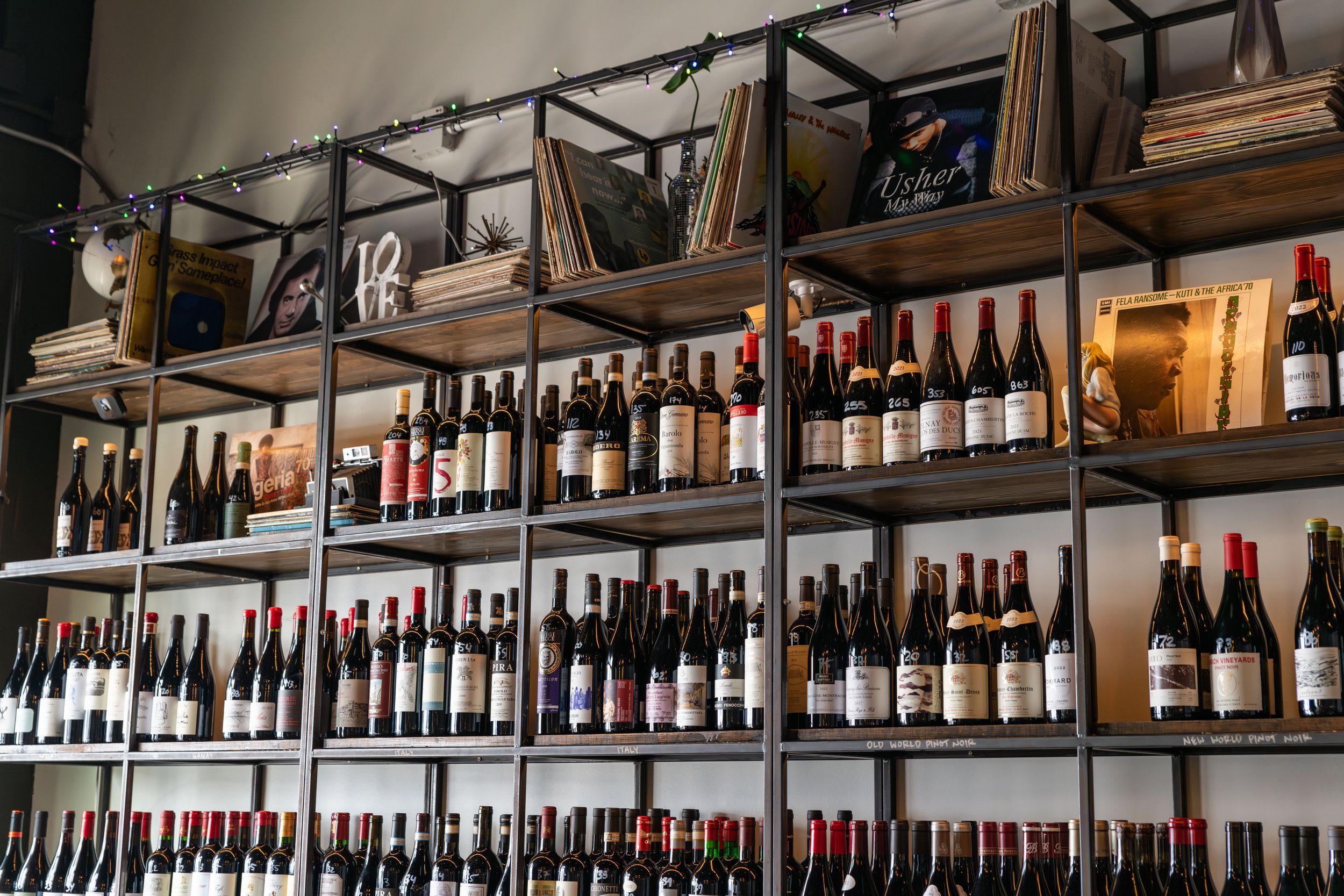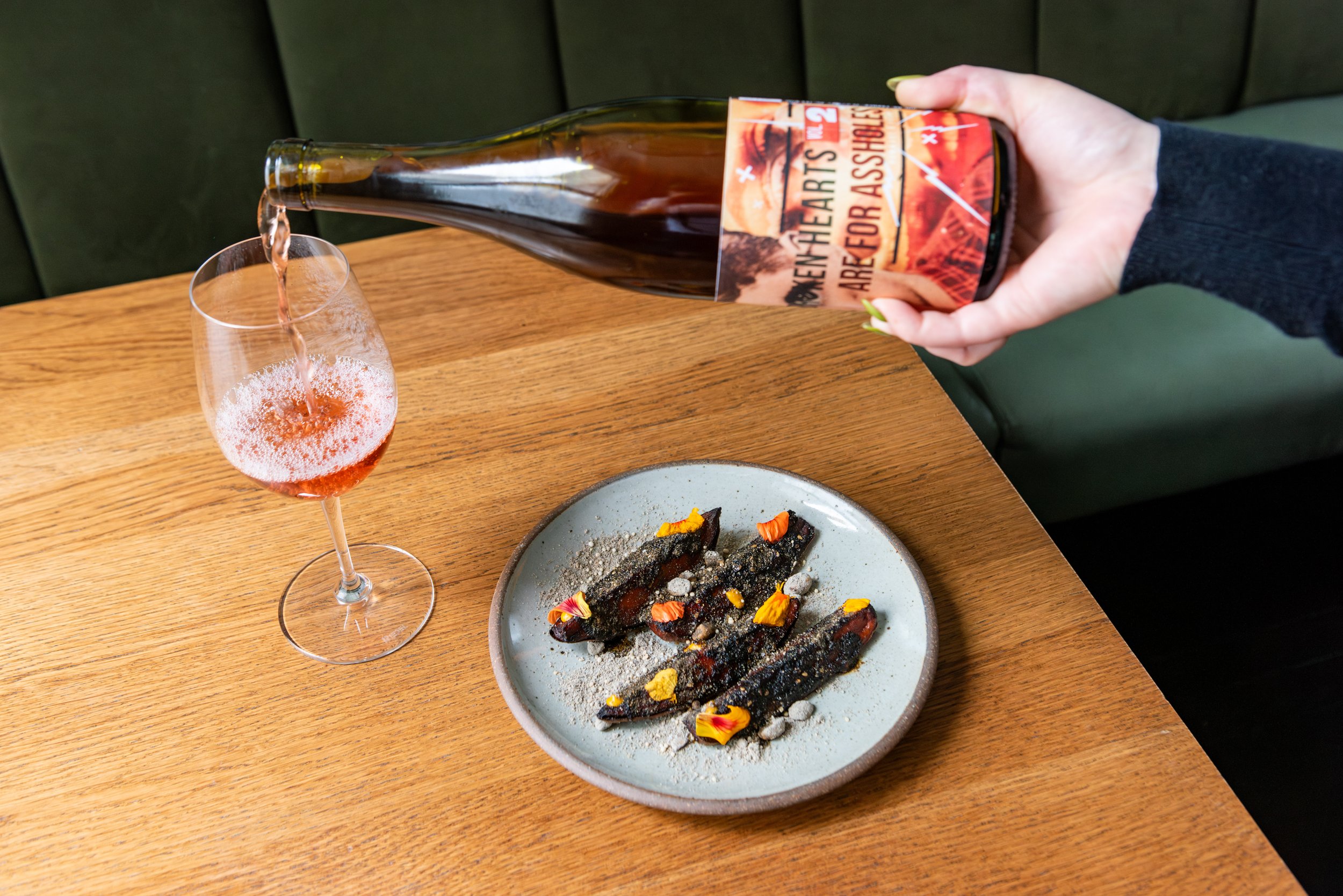Bottling Colorado Roots
Inspired by languid dinner in Abruzzo, Spuntino co-owner and barman Elliott Strathmann bottles his own amari, using native herbs, flowers, and barks.
house digestivos at Spuntino
Eating their way through Abruzzo, Elliot Strathmann and Rising Star Chef Cindhu Reddy finished every meal with amaro, free of charge, as per the law of the land. Nightly, an old man would emerge and pour from an unlabeled bottle of house-made digestive—each with their own distinct character. Back from the Apennines and into the Rockies, Strathmann began some amaro experimentation at the restaurant he owns with his wife Reddy, Spuntino. Colluding with barman Jason Randall (now of Rebel Restaurant), Strathmann began making his own versions of Italian liqueurs.
“For us, it was an important piece of the Italian restaurant puzzle,” says Strathmann. As batches of house limoncello and Genziana, a gentian based-amaro, began making their way out to the dining room, Strathmann learned more about the age-old practice of making bitter liqueurs. “The more we learned about Italian amaro, we realized that regionality and transparency of expression was integral to the character of any amaro.” At its core, amaro tells the story of a place. “Rather than emulate, if it was going to be meaningful, it had to represent our sense of place, with wild ingredients native to Colorado,” says Strathmann. The flavors are piney, woodsy, and according to Strathmann, “similar to things you would smell out on a hike.”
In his latest batches, he uses osha root, which brings a celery-pine flavor, as well as ponderosa pine sap, wild juniper, and Colorado gentian (which is milder than its European counterpart). Chokecherries, which Native Americans used for medicinal purposes, bring tartness, tannins, and a hint of sweetness. To round things out, he adds foraged amaro stalwarts like wormwood, sagebrush, and other Artemisia (a group of hardy herbs with potent essential oils).
Strahmann macerates the botanicals in 190-proof Kentucky grain alcohol (the only ingredient not made in Colorado—they’re working on it!), starting with the fresh herbs. “We go for short, highly concentrated [macerations] for fresh ingredients, and much longer, lower concentration for dried,” says Strathmann. After a total maceration time of up to 6 months, it’s a matter of diluting and sweetening. “Sometimes I use cane sugar, but it’s predominantly honey,” he says. He sources the wildflower honey from local tomato farmers. From there, the amaro goes into oak barrels for three to 10 months before bottling. The native species give the amaro an aroma of pine and anise, with highly toned and distinctly woody flavors.
Spuntino’s amaro has moved from passion project to the bar, with four on the menu and countless bottles in the cellar. Stratham’s staff now uses the house elixirs for the restaurant’s cocktail menu. In the dining room, though, Strathmann gives the digestive out for free. “It’s part of the fun,” he says, and a nod to his time in Abruzzo, where he fell in love with bitter liqueurs and the culture of house digestivos.







